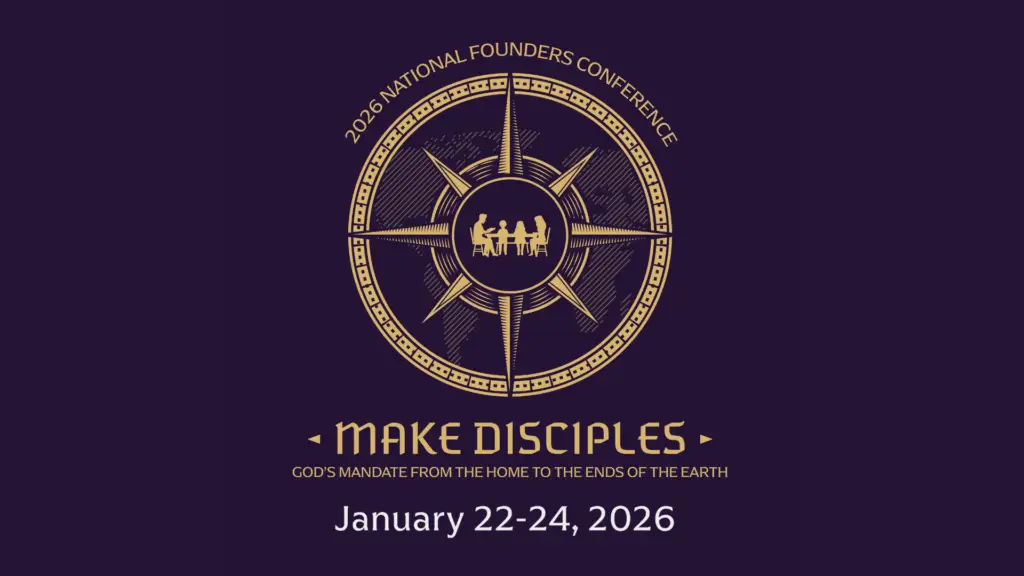This article is part 2 of a 5-part series entitled Revisiting Revoice
According to Genesis 1:31, when God finished creating everything in just six days, “God saw all that He had made, and behold, it was very good.” In 1 Timothy 4:1-5, we learn that much of the goodness of God’s creation persists to this day, “But the Spirit explicitly says that in later times some will fall away from the faith, paying attention to deceitful spirits and doctrines of demons, by means of the hypocrisy of liars seared in their own conscience as with a branding iron, men who forbid marriage and advocate abstaining from foods which God has created to be gratefully shared in by those who believe and know the truth. For everything created by God is good, and nothing is to be rejected if it is received with gratitude; for it is sanctified by means of the word of God and prayer.” The goodness of God’s creation, including marriage (with its sexual relations) and food, is an indisputable component of biblical Christianity, as is the goodness of Adam and Eve as they were originally created. Since Adam and Eve were created good, they did not exhibit SSA, or any other sinful desire. Had they exhibited SSA, they would have been “very good” even while desiring sin, setting up a sort of dualism that makes God the creator of sinful desires, temptations, and the subsequent suffering of struggles with those temptations to sin.
Some might object to this line of argumentation by positing that SSA is not an inherently sinful desire. Some might posit SSA as a morally neutral desire or attraction instead. The problem with positing any desire as a merely neutral desire in terms of the created order is that God did not call his creation “neutral.” God called his creation “good.” The desires of Adam and Eve were good desires and their attractions were good attractions. So, whatever else SSA is, it must be morally good, or morally bad, and not neutral.
Suppose then, for the sake of argument, that SSA need not be same-sex sexual attraction. Suppose SSA can be construed in terms of mere same-sex attraction. Call this SSA2. SSA2 is at its core a non-sexual aesthetic orientation such that SSA2 males more readily appreciate the beauty of other males and SSA2 females more readily appreciate the beauty of other females. The apparent advantage of this approach is that the discussion moves from the realm of sexualattraction into the realm of aesthetic attraction, and SSA2, thus Platonized, makes room for the inherent moral goodness of same-sex attraction. Could aesthetic orientation of this sort constitute an account of SSA2 for the sake of retaining a morally good ‘gay Christian’ identity?
No. The shift to SSA2 is effective only if one grants the necessary moral goodness of an aesthetic orientation. The assumption here is that mere aesthetic orientation is necessarily morally good. Thus if it is even possible that an aesthetic orientation (of any sort) can be sinful, then the SSA2 advocate has only pushed the problem with SSA back a step. The burden is on the SSA2 advocate to prove that SSA2, unlike SSA, is necessarily morally good. Providing such an argument seems difficult, to say the least. Moreover, it is possible that p: SSA2 is morally culpable sin. To establish p, we can work from actual instances of unnatural or disordered aesthetic attraction. If any one instance of unnatural or disordered aesthetic attraction exists, then p is sufficient to discredit an account of SSA2 as a necessarily non-sinful same-sex aesthetic attraction.
Not even aesthetic orientations are outside the realm of norms. In his 1960 piece, “Eye of the Beholder,” Rod Serling creates a scenario in which a woman’s face is wrapped up in bandages so that the viewers cannot see her. The doctors working on the woman are in constant conversation about how hideous a creature they are working on, but the viewer never sees their faces. When, at last (spoiler alert), the woman’s face is revealed, she turns out to meet all the ‘standards’ of what most consider an ‘attractive’ woman, while the doctors are revealed to look less than human, or ‘ugly,’ as it were. The hypothetical is supposed to demonstrate something like the idea that ‘beauty is in the eye of the beholder,’ but anyone who believes in an objective standard of beauty, as with the dogmatic aestheticians, or in an intersubjective experience of beauty, as with the empiricists, will find a fundamental disagreement with Serling’s apparent point. The possibility of Serling’s attempt at making his point is premised upon the assumption that some aesthetic desires are unnatural for humans to hold; otherwise his viewers would not have understood the scene at all.
Certainly, beauty can be in the eye of the beholder, but beauty is likewise in the eyes of many other beholders besides, if not in the all-beholding eye of God (Psalm 27:4), from which it follows that some things really are ugly. But this realization makes us nervous. Who is to say what is beautiful or ugly? Nevertheless, knowing that a standard or intersubjective experience of beauty exists and knowing what is beautiful are two different things. Consider Andres Sarrano’s “Piss Christ,” an ‘art work’ in which Sarrano has placed a small crucifix in a tank with his urine. Few would venture so far as to preclude proper judgments regarding the beauty or ugliness of this piece. Some might even venture so far as to say that those who believe the piece is beautiful are, in some form or fashion, not functioning properly. Others might even call such an evaluation sinful. If the foregoing analysis is correct, then Platonizing SSA2 by way of appeal to aesthetic appreciation does not necessarily render the concept sinless. Aesthetic attraction can be morally good or evil. And this we can say without getting into what Plato himself wrote regarding Grecian same-sex aesthetic attraction in places like, for example, the Symposium, where we are forced to say that attractions indexed to particular populations of people are most certainly wrong.
If aesthetic attraction can be a morally culpable affair with respect to any given individual or group of people, then it can be a morally culpable affair with respect to any other individual or group of people. The burden of proof is thus on the person claiming that a particular aesthetic attraction is always either morally neutral or a moral good. Claiming a particular aesthetic attraction hashed out in terms of an actual moral neutral or good does not work apart from a justifying argument, and in this instance, the mere assertion of such is question begging. Otherwise, given the possibility of bad aesthetic attraction, SSA2 does nothing to mitigate the seriousness of positing a ‘gay Christian’ identity. One cannot simply assume that such an attraction is a moral good, especially in light of the fact that such an attraction does not comport with Scriptural and creational norms. Any aesthetic values Adam and Eve held prior to the Fall were good aesthetic values. Their opposites would no doubt have been bad aesthetic values. And aesthetically speaking, the opposite of Adam and Eve’s natural states of attraction would have been something like SSA2.
Much was granted in terms of an assessment of SSA2. Nothing in the creation account would lead someone to believe Adam or Eve experienced SSA2, or that it would even be possible for them to do so. Readers will readily note how much must be read back into the text of Scripture to make anything like SSA2 work. This approach is intentional on the part of advocates for the theology underlying the Revoice Conference. That is to say, Revoice theology does not derive its needed categories for SSA and SSA2 from Scripture, but from sociology, and in particular, those schools of sociology related to the topic of identity, and consistent with the positing of a supposed ‘gay orientation.’ This approach, in and of itself, serves to undermine the sufficiency of Scripture with respect to the fight against the sin of SSA. Moreover, a distinction must be drawn between beauty and attraction. Beauty exists objectively in someone or something and is intersubjectively recognized by a group of people whereas the further step of attraction to beauty indicates a movement toward something deemed beautiful. A biblical notion of male beauty on the part of a male reckons all other men brothers and fathers. Likewise, a biblical notion of female beauty on the part of a female reckons all other women sisters and mothers. We find this with Christ. But a man who is drawn to male ‘beauty,’ or a woman who is drawn to female ‘beauty,’ in an attractional sense, which is the sense posited by SSA2, is experiencing SSA. Thus SSA2 is reducible to SSA. This state of affairs is analogous to the attraction one might feel toward the beauty of an object, versus mere appreciation for that object’s beauty. The former constitutes covetousness, whereas the latter is an instance of exalting in God because of the beauty of his creation.
Historically, terms like ‘gay’ and ‘homosexual’ pertain to human sexuality. Thus a popular-level SSA2 is more likely to be missing the necessary nuance for avoiding a reduction to SSA, which is more consistent with historical precedent. Why drop the sexual aspect of a term like ‘homosexuality’ and retain its supposedly aesthetic meaning anyway? Analytic evaluation of the terms involved highlights the difficulty of divesting them of their sexual meanings. What would it mean to be a non-sexual homosexual Christian? Hence, aesthetically, historically, analytically, and of course theologically, there seems to be every reason to reject SSA2 as a viable category distinct from SSA. This assessment of the matter accounts for every aspect of Revoice, whereas SSA2 does not. A man could appreciate the beauty of a another man, or a woman the beauty of another woman, without them being romantically or sexually drawn to one another in terms of attraction, but such an observation hardly merits an entire conference and category of Christian to accommodate it.
This article is part 2 of a 5-part series entitled Revisiting Revoice
Follow Chris Bolt:
-
- Twitter | @cbolt

































